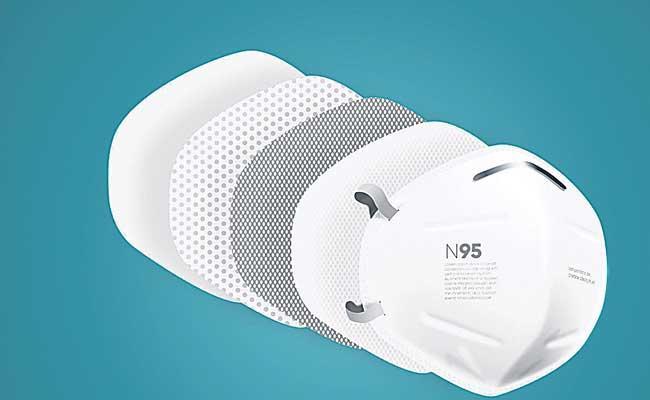How to Differentiate Between a Certified N95 Mask and a Fake One

Coronavirus outbreak has sparked a more serious threat of counterfeit goods; How can one spot an original, certified N95 mask from a fake one. Here are some tips
The N95 masks are one of the most essential pieces of COVID-19 protective gear. Health experts have time and again recommended that an N95 or FFP2 S masks are ideal against the COVID-19 virus as they protect from airborne droplets and filter 94 or 95 per cent of particles. These masks provide better protection than ordinary cloth or surgical masks because they are designed to achieve a very close facial fit and their structural design is effective in filtering out the airborne particles.
However, two years into the pandemic, fake masks from uncertified manufacturers have pervaded the marketplace - for a layman, it becomes difficult to differentiate between thousands of counterfeit masks that have flooded ecommerce platforms and local stores. To protect oneself and others around us, one must learn to recognize red flags when buying these items. Let’s take a quick look.
Know when a mask is certified
Filtering face piece respirator masks are regulated by different bodies in different countries. N95 respirators have been regulated by the National Institute for Occupational Safety and Health (NIOSH) in the USA and FFP2 S is regulated by Bureau of Indian Standards (BIS) based on European Standards. FFP2 S respirators that meet the standard are considered effectively equivalent to N95 respirators in their performance and ability to filter particles. Every batch of Savlon FFP2 S mask undergoes rigorous testing on quality performance and efficacy as prescribed in the Bureau of Indian Standards.
Depending on the type of aerosol, the respirator is suited to filter the FFP2 may be suffixed with S (Solid Aerosol) which is similar to the NIOSH “N” rating. BIS certified masks from Savlon fall in the FFP2 S efficacy category.
How does N95 mask work?
The N95/FFP2 S is a high barrier to transmission of infection, and air-borne viruses. Rigorously tested N95/FFP2 S masks usually use five-layers and have electrostatically charged melt-blown filters with a complex mesh of fibers that provide protection by trapping airborne particulate aerosols such as viruses, bacteria, pollen dust as small as 0.3 micron. Such masks are designed to give a good fit which means leakage from the sides of the mask are also minimized. Moreover, it acts as a barrier to protect the wearer from inhaling droplets released by others. These masks should not be put through conventional cleaning procedures like washing as that can compromise their structural integrity and can take away their effectiveness.
N95/FFP2 S masks also help in protecting others around as well as they filter out the exhaled air preventing the spread from an infected person to an uninfected one. Masks with exhalation valves allow air to leave the mask without filtering it – which means that the virus can spread from an infected (even asymptomatic) person to others.




